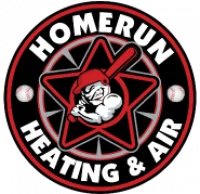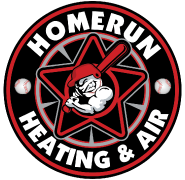Longmont, CO, is a beautiful and dynamic place to live, with its picturesque mountain views, rich local culture, and strong community spirit. But like any area with distinct seasonal changes, homeowners in Longmont must be prepared for the shifting weather patterns that can bring about plumbing challenges. While winter’s freezing temperatures and snowstorms pose certain risks, spring in Colorado comes with its own set of plumbing problems.
From fluctuating temperatures to increased moisture levels, the change of season often reveals plumbing issues that were hiding under the surface. With a little knowledge and a proactive mindset, homeowners can take steps to prevent costly repairs and ensure their plumbing systems stay in top shape throughout the year. In this blog, we’ll explore some of the most common spring plumbing problems in Longmont homes and provide tips for preventing them before they start.
Why Spring Brings Plumbing Concerns
Spring in Longmont can be unpredictable. While it’s not uncommon to enjoy sunny days with mild temperatures, there’s always the chance of late-season snowstorms or unseasonably cold nights. These fluctuations in weather can affect your plumbing, especially after months of harsh winter conditions. Additionally, spring often brings increased rainfall and melting snow, which can lead to standing water, leaks, or a strain on your drainage systems.
Understanding how the local climate impacts plumbing is key to preventing these issues. It’s not just about handling extreme temperatures or heavy precipitation—it’s also about ensuring your home’s pipes, water heater, and sewage systems are properly maintained to handle the changing conditions. Let’s dive into some of the most common spring plumbing problems and how to address them.
1. Preventing Frozen Pipes from Thawing Improperly
While spring is often a time of thawing and renewal, it also brings the risk of improperly thawed frozen pipes. During Longmont’s colder months, pipes in uninsulated areas such as attics, basements, or crawl spaces can freeze when the temperature drops below freezing. These frozen pipes are at risk of bursting if they’re not allowed to thaw properly.
How to Prevent This:
- Insulate Exposed Pipes: To prevent freezing in the first place, ensure that any exposed pipes are insulated. Use pipe insulation or foam sleeves, especially in areas like basements, attics, and garages.
- Allow a Slow Thaw: If you suspect a pipe has frozen, never try to thaw it quickly with an open flame or direct heat. Instead, apply gentle heat with a hairdryer or heating pad. Always start from the faucet and work your way back.
- Leave Faucets Dripping: During colder months, leaving a faucet dripping slightly can help prevent pipes from freezing by keeping water flowing.
If you do have frozen pipes, it’s crucial to address the issue quickly, as bursts can lead to significant damage to your home’s plumbing system. For thorough inspections and repairs, a professional plumber can ensure your pipes are thawed safely and that any damage is fixed.
2. Dealing with Leaky Pipes and Fittings
Spring’s increase in moisture levels can exacerbate any existing leaks in your plumbing system. If your pipes have been subject to freezing temperatures and are beginning to thaw, there may be weak spots that result in leaks. Additionally, the thawing process can sometimes cause pipes to expand and contract, further compromising their integrity.
How to Prevent This:
- Inspect for Leaks: Before spring rains begin, check your plumbing for visible signs of leaks. Look under sinks, around toilets, and in the basement for any damp spots or pooling water.
- Seal Connections: Tighten loose pipe fittings and replace any worn-out washers or seals. These simple steps can prevent minor leaks from turning into major issues.
- Monitor Water Pressure: High water pressure can stress your pipes and lead to leaks. Consider installing a water pressure regulator if your pressure is above 80 psi, which is the standard for most homes.
Regular maintenance and inspections will help identify any areas that might be at risk of leaking when the weather warms up.
3. Checking Your Water Heater
Water heaters are often the unsung heroes of our plumbing systems. In spring, it’s important to check that your water heater is running smoothly after months of heavy use during the winter. Fluctuations in temperature and increased demand for hot water during spring cleaning or preparing for outdoor activities can place additional stress on your water heater.
How to Prevent This:
- Flush the Tank: Over time, sediment can build up in your water heater’s tank, reducing its efficiency and potentially causing damage. Flushing the tank once a year can help prevent this buildup and extend the life of your heater.
- Check for Leaks: Look for signs of leaks or corrosion around the base of the heater or on its connections.
- Set Temperature Correctly: Set the thermostat on your water heater to 120°F to prevent overheating and unnecessary energy use.
If your water heater is showing signs of trouble, it’s best to have a professional inspect and repair it before the issue escalates.
4. Addressing Clogged Drains
Spring rains and snowmelt can overwhelm your home’s drainage systems, especially if there are clogs in your pipes or gutters. Whether it’s tree roots, grease buildup, or debris in your drains, these blockages can lead to water backup and potential flooding, particularly when the increased runoff from spring weather overwhelms your plumbing.
How to Prevent This:
- Clean Gutters Regularly: Spring’s increased rainfall can quickly overwhelm clogged gutters, causing water to pool around your home’s foundation. Clean gutters before the rain begins to ensure proper drainage.
- Avoid Pouring Grease Down Drains: Grease, oil, and food particles can congeal and cause significant blockages in your pipes. Always dispose of grease in the trash, not the sink.
- Use Drain Screens: Install screens over sink drains, bathtubs, and shower drains to catch hair, soap scum, and debris before they enter your pipes.
If you notice slow-draining sinks or water backing up, it’s time for a professional drain cleaning to ensure your pipes are clear and free-flowing.
5. Managing Outdoor Plumbing and Sprinkler Systems
In Longmont, the shift from winter to spring often means turning on outdoor irrigation systems and getting your lawn and garden ready for the growing season. However, irrigation systems that have been dormant for months can suffer from a variety of issues, including broken sprinkler heads, cracked pipes, or faulty valves.
How to Prevent This:
- Inspect Sprinkler Systems: Before activating your sprinkler system, check for broken or damaged sprinkler heads, clogged nozzles, or leaks in the pipes. Test the system to ensure everything is functioning properly.
- Check Hose Bibs and Outdoor Faucets: Make sure your outdoor faucets are in good condition and free of leaks. If you notice any issues, consider replacing worn-out washers or gaskets.
- Prepare for the Growing Season: Spring is a great time to install drip irrigation systems for more efficient watering. These systems help conserve water and direct it right where it’s needed in your garden.
Ensuring that your outdoor plumbing is ready for the season can help you avoid any unwelcome surprises when it’s time to water your plants.
6. Inspections and Professional Maintenance
While there’s a lot you can do to prevent spring plumbing issues, nothing beats a professional inspection. Plumbing systems are complex, and some issues may not be visible or obvious to the untrained eye. A licensed plumber can provide a thorough inspection and address any potential problems before they become major issues.
How to Prevent This:
- Schedule an Annual Plumbing Inspection: Annual inspections are the best way to ensure that your plumbing is in good shape. A professional plumber can identify and address any concerns with pipes, water heaters, or drains.
- Consider a Whole-House Plumbing Assessment: If you’ve experienced plumbing issues in the past, a comprehensive plumbing assessment can give you peace of mind and prevent future problems.
For Plumbing Services in Longmont, CO, Contact Homerun Heating & Air Today
Spring is a beautiful time of year in Longmont, but it’s also a time to be mindful of your home’s plumbing system. From preventing frozen pipes to ensuring your sprinkler system is functioning correctly, taking a proactive approach to plumbing maintenance will help keep your home in good condition for the months ahead.
If you need help with plumbing inspections, repairs, or maintenance, don’t hesitate to reach out to Homerun Heating & Air. Our experienced professionals are here to ensure your plumbing system runs smoothly, so you can enjoy the warmer weather without worrying about plumbing issues. Contact us today to schedule your plumbing service and prevent problems before they start.

